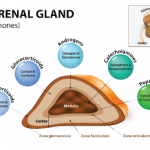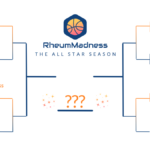 In 1949, the first description of patients with rheumatoid arthritis (RA) given cortisone sent shockwaves through the medical community, quickly capturing the public imagination as well. The paradigm-shifting report paved the way for the use of cortisone and related drugs in RA and many other medical conditions.1 The following is a discussion of some of the context of that pivotal study and some continued questions that remain—more than 70 years later—about the optimal use of these critical agents.
In 1949, the first description of patients with rheumatoid arthritis (RA) given cortisone sent shockwaves through the medical community, quickly capturing the public imagination as well. The paradigm-shifting report paved the way for the use of cortisone and related drugs in RA and many other medical conditions.1 The following is a discussion of some of the context of that pivotal study and some continued questions that remain—more than 70 years later—about the optimal use of these critical agents.
RA in the Pre-Steroid Era
Treatment for RA in the 1940s was extremely limited, and many patients experienced long-term deformity and severe disability from their disease. Treatment consisted largely of bed rest, sometimes encouraged via hospitalization; physical therapy (e.g., exercises, massage, joint bracing); vitamins; aspirin; gold salt injection therapy; and, sometimes, experimental therapies.2
Other treatments included fever therapy, removal of presumed infectious foci (e.g., tonsillectomy) and vaccine therapy (from various bacterial strains), although these were falling out of fashion by the 1940s. These therapies were based on the infectious theory of RA, which posited the disease was caused by some sort of infection, either as a direct response to infection, from exposure to an infection-related toxin or to an infection-related allergic response. At the time, RA was even referred to as “chronic infectious arthritis” at times, although that theory had begun to wane by the 1930s.2

Dr. Bucala
Richard Bucala, MD, PhD, professor of medicine and chief of the Division of Rheumatology, Allergy and Immunology at Yale, New Haven, Conn., points out that at the time, it was known that joint inflammation occurred after streptococcal throat infection in the condition rheumatic fever. “So the fact that a pathogen or infection might be the cause of rheumatoid arthritis was obviously an open idea.”
Anti-Rheumatic Substance X
In 1926, Philip S. Hench, MD, the first author of the later paper on cortisone in RA, became the first head of the Mayo Clinic’s first rheumatology service in Rochester, Minn.2 Beginning in 1929, Dr. Hench made a series of observations that helped lead to his insight to try cortisone in patients with RA.3
Through multiple papers, Dr. Hench described how jaundiced patients sometimes experienced a remission in their RA symptoms, as did pregnant women. He even went as far as using toxins to induce jaundice in patients, which did temporarily improve arthritis symptoms in some patients. Dr. Hench began to speculate that some sort of naturally occurring substance produced in the body, which he termed “substance X,” accounted for improvement in these disparate situations.3

